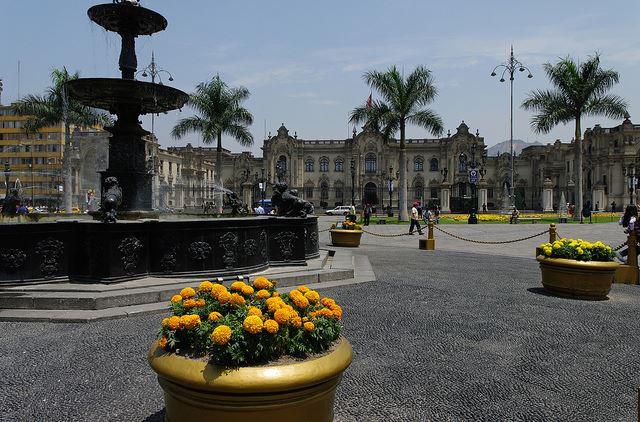
Colonial culture in central Lima
Modern-day Peru is a blend of three cultural eras: ancient Peru, colonial Peru, and contemporary Peru. Each plays an important role in the country’s national identity, shaping how Peruvians perceive themselves as well as how they present their country to the world. Though Lima, home to more than a quarter of Peru’s population, contains aspects of all three eras, its central plaza and surrounding area is one of the best places to explore the colonial piece of Peru’s past and present.
Founded in 1535 by conquistador Francisco Pizarro, Lima is both the colonial and current capital of Peru. At the time of its founding, the riches of the Inca Empire were inland at Cusco, but the Spaniards needed easy access to the sea, and correspondingly to Europe. The area’s flat terrain also deterred indigenous attacks and uprisings, as the locals on foot where no match for unencumbered Spaniards astride horses. These reasons, among others, made Lima a practical place for the empire’s new capital.

Despite the death of Pizarro in 1541—actually a murder by rival Spanish fractions—Lima thrived, becoming the most important city in South America until the mid-1700s. In 1746 a massive earthquake shook the city, sending many of its original buildings to the ground. Most of the historic structures standing today were built after the quake.
A colonial tour of Lima starts with a visit to the main plaza, surrounded by historic buildings such as the main Cathedral, the Archbishop’s Palace, Town Hall, and the President’s residence at Palacio de Gobierno. A UNESCO World Heritage Site, the plaza gives travelers a taste of what early Lima looked like. It was here Pizarro paced while plotting battles against the Incas and also where the people of Peru proclaimed independence in 1821. And although the locals now drive taxis, chat on cell phones, and enjoy the comforts of the contemporary world, Lima’s European colonial descent is visible in the lighter skin of many of city’s inhabitants, especially when compared to other Peruvian regions, such as the Sacred Valley. Today, 15% of Peru’s population is white, 45% Amerindian, and 37% mestizo (a mix of the two).

For a more intimate experience with colonial Lima, head indoors. There are several mansions that were once private homes of the elite. Many now house government offices or museums, but still retain classic features such as ornate wooden balconies and spacious courtyards, as well as antique artwork and furniture. The most impressive is Casa Aliaga, one of the first houses built in Lima. Even more remarkable is that the building is still owned by its original inhabitants, the Aliaga family, which arrived with Pizarro back in the 1500s.
Catholicism played a large role in the conquest and founding of Peru, and remains a strong force today. More than 80% of the population identifies with the Roman Catholic religion. La Catedral on the eastern side of the main plaza was first built in 1535 but has undergone many reconstructions and additions over the years. A massive interior space adorned with a gold leaf alter and delicately carved choir stalls greets visitors. The building is also the final resting place of Pizarro, whose remains are held within the chapel.
Keen to see Lima for yourself? Check out our Machu Picchu & Peru tours here or speak to one of our Destination Experts about crafting the bespoke vacation of your dreams.